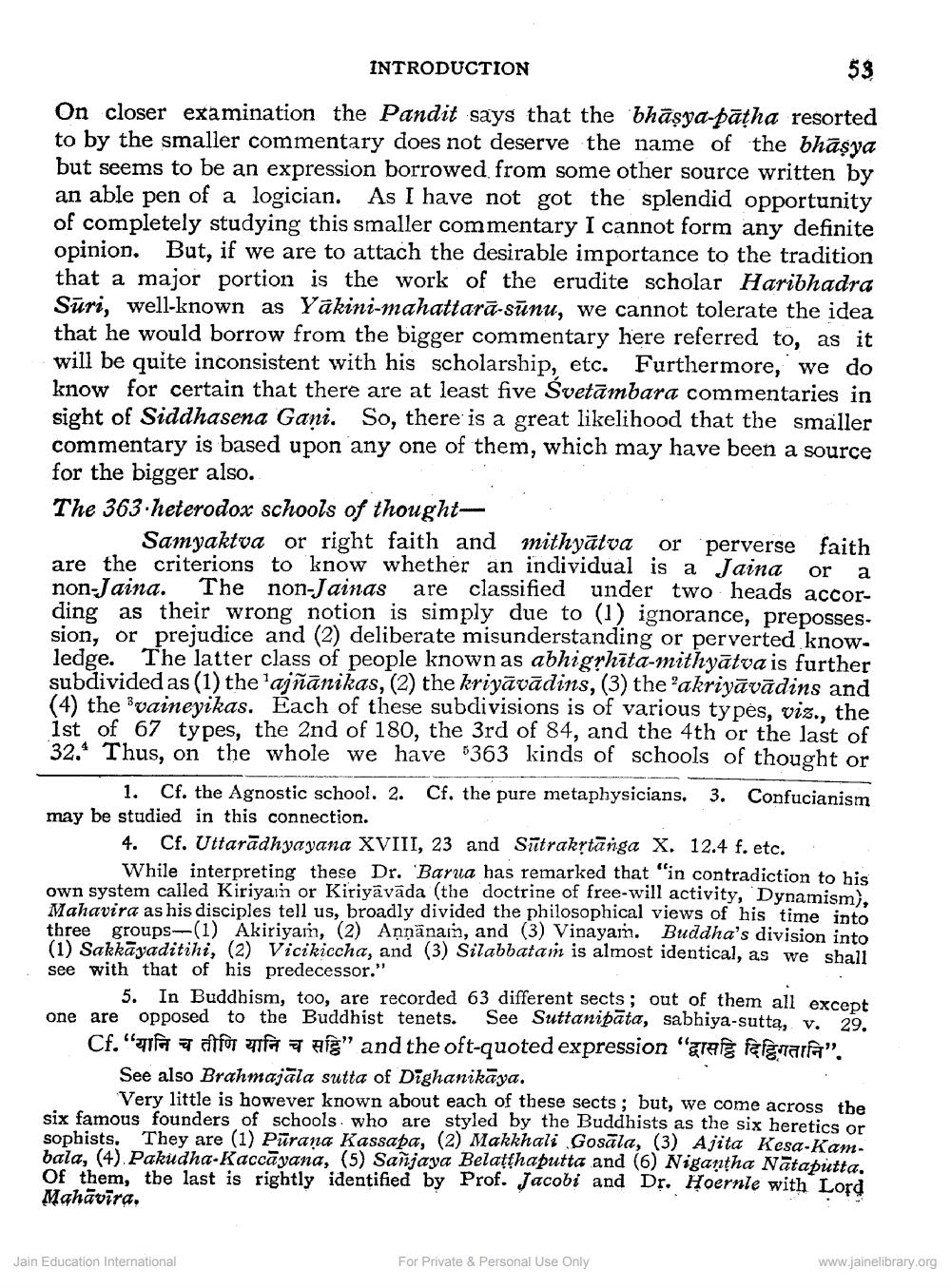________________
INTRODUCTION
53
coyakto to kncinas
adimply inderstahläta-mitbrivavaamid., the
On closer examination the Pandit says that the bhāsya-pātha resorted to by the smaller commentary does not deserve the name of the bhāsya but seems to be an expression borrowed from some other source written by an able pen of a logician. As I have not got the splendid opportunity of completely studying this smaller commentary I cannot form any definite opinion. But, if we are to attach the desirable importance to the tradition that a major portion is the work of the erudite scholar Haribhadra Sūri, well-known as Yakini-mahattarā-sūnu, we cannot tolerate the idea that he would borrow from the bigger commentary here referred to, as it will be quite inconsistent with his scholarship, etc. Furthermore, we do know for certain that there are at least five Svetāmbara commentaries in sight of Siddhasena Gani. So, there is a great likelihood that the smaller commentary is based upon any one of them, which may have been a source for the bigger also. The 363.heterodox schools of thought
Samyaktva or right faith and inithyātva or perverse faith are the criterions to know whether an individual is a Jaina ora non-Jaina. The non-Jainas are classified under two heads according as their wrong notion is simply due to (1) ignorance, preposses. sion, or prejudice and (2) deliberate misunderstanding or perverted knowledge. The latter class of people known as abhigrhīta-mithyātva is further subdivided as (1) the 'ajñānikas, (2) the kriyāvādins, (3) the 'akriyāvādins and (4) the Svaineyikas. Each of these subdivisions is of various types, viz., the 1st of 67 types, the 2nd of 180, the 3rd of 84, and the 4th or the last of 32. Thus, on the whole we have 5363 kinds of schools of thought or
1. Cf. the Agnostic school. 2. Cf. the pure metaphysicians. 3. Confucianism may be studied in this connection.
4. Cf. Uttarādhyayana XVIII, 23 and Sūtrakrtānga X. 12.4 f. etc.
While interpreting these Dr. Barua has remarked that "in contradiction to his own system called Kiriyain or Kiriyavāda (the doctrine of free-will activity, Dynamism. Mahavira as his disciples tell us, broadly divided the philosophical views of his time into three groups-(1) Akiriyam, (2) Aņņānain, and (3) Vinayam. Buddha's division into (1) Sakkayaditihi, (2) Vicikiccha, and (3) Silabbatam is almost identical, as we shall see with that of his predecessor."
5. In Buddhism, too, are recorded 63 different sects; out of them all except one are opposed to the Buddhist tenets. See Suttanipāta, sabhiya-sutta, v. 29. Cf. 7 alfo fa 7 afg" and the oft-quoted expression "gree falgrarfar".
See also Brahmajäla sutta of Dīghanikaya.
Very little is however known about each of these sects; but, we come across the six famous founders of schools who are styled by the Buddhists as the six heretics or sophists. They are (1) Pūrana Kassapa, (2) Makkhali Gosāla, (3) Ajita Kesa-Kambala, (4) Pakudha-Kaccāvana, (5) Sanjaya Belatthaputta and (6) Nigantha Nataputta. Of them, the last is rightly identified by Prof. Jacobi and Dr. Hoernle with Lord Mahāvīra,
Jain Education International
For Private & Personal Use Only
www.jainelibrary.org




